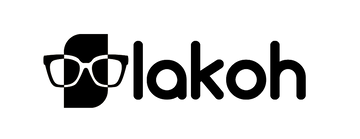How Do I Know When I Need Bifocals?
What Are Bifocals?
Bifocals are a type of eyeglasses designed to correct two different vision problems: nearsightedness and presbyopia. They have distinct areas for distance vision and near vision, typically divided by a visible line across the lens.
Signs You Might Need Bifocals
As we age, our eyes undergo changes that can affect our ability to see up close. Here are some common signs that you might need bifocals:
-
Difficulty Reading Small Print: If you find yourself holding reading material at arm's length to see it clearly, it could be a sign of presbyopia, a condition that affects near vision.
-
Eye Strain and Headaches: Squinting or experiencing frequent headaches when reading or working on close-up tasks may indicate that your eyes are having trouble focusing.
-
Blurry Vision at Different Distances: If you have clear distance vision but struggle with close-up tasks like reading or using a computer, bifocals could be beneficial.
Understanding Age-Related Vision Changes
As we get older, our eyes undergo several changes that can impact our vision:
-
Presbyopia: This is a natural part of aging where the lens of the eye loses flexibility, making it difficult to focus on close objects.
-
Loss of Accommodation: The ability of the eye to change focus from far to near objects decreases with age.
Common Symptoms of Presbyopia
Presbyopia usually becomes noticeable around the age of 40 and can manifest in various ways:
-
Difficulty Reading Small Print: This includes books, newspapers, smartphone screens, and labels.
-
Eyestrain: You may experience discomfort or fatigue after prolonged reading or close work.
-
Needing More Light: As your eyes age, you may require brighter lighting to see up-close objects clearly.
Difference Between Bifocals and Reading Glasses
While both bifocals and reading glasses address presbyopia, there are differences between them:
-
Bifocals: Offer correction for both near and distance vision in a single lens, with a visible line dividing the two areas.
-
Reading Glasses: Provide magnification for near vision only and are used for close-up tasks.
How Bifocals Correct Vision Problems
Bifocals work by combining two prescriptions into one lens:
- The upper portion corrects distance vision.
- The lower portion corrects near vision.
When to Consider Getting Bifocals
If you're experiencing difficulty with close-up tasks and notice signs of presbyopia, it may be time to consider bifocals. Here are some indicators:
-
Struggling with Daily Tasks: If reading, using digital devices, or doing close work becomes challenging or uncomfortable.
-
Frequent Headaches or Eyestrain: Especially after prolonged close work.
-
Needing to Hold Reading Material Farther Away: This is a common sign of presbyopia.
Consulting an Eye Care Professional
If you're unsure whether bifocals are right for you, schedule an eye exam with an optometrist or ophthalmologist. They can assess your vision and recommend the most suitable option.
Exploring Alternatives to Bifocals
If you're not ready for bifocals or prefer alternatives, there are other options available:
-
Progressive Lenses: Offer a smooth transition between distance and near vision without a visible line.
-
Multifocal Contact Lenses: Provide both distance and near vision correction, similar to bifocal glasses.
Conclusion: Taking Care of Your Vision
Recognizing the signs that you need bifocals is the first step towards clearer vision. Regular eye exams and discussing any vision changes with your eye care professional can help ensure you get the right solution for your needs. Whether it's bifocals, reading glasses, or other options, taking care of your vision is essential for maintaining a high quality of life.







